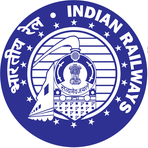Infrastructure Developments: A Mixed Bag for India’s Transport Sector
August 6, 2024, 10:45 am
India's infrastructure landscape is a tapestry woven with ambition and challenges. Recent developments in the transport sector highlight this duality. On one hand, we see the appointment of Rinkesh Roy as President of JSW Infrastructure, a move that signals growth and strategic vision. On the other, the Gulbarga rail division faces stagnation, with no new projects on the horizon. This juxtaposition paints a vivid picture of the current state of Indian infrastructure.
Rinkesh Roy’s appointment at JSW Infrastructure is a beacon of hope. With a background steeped in the Indian Railways, he brings a wealth of experience. His leadership is expected to steer the company through a phase of ambitious growth. Roy’s expertise in managing large-scale projects will be crucial. He is tasked with enhancing operational efficiencies and aligning various infrastructure projects with the company’s strategic goals. This is no small feat. The infrastructure sector is a complex web of logistics, operations, and economic impact.
JSW Infrastructure is part of the larger JSW Group, which has been making waves in the infrastructure sector. The company is focused on port operations and logistics, aiming to carve out a significant niche in the market. Roy’s leadership comes at a pivotal time. The company is poised to undertake several key projects that could redefine its capabilities. His experience in the railways, known for its intricate operational challenges, will be instrumental in navigating these waters.
Meanwhile, the Kerala government is drafting a master plan for the Vizhinjam Port. This port, strategically located on India’s southwestern coast, is set to become a critical node in the maritime network. The master plan aims to enhance port facilities, improve connectivity, and optimize logistics operations. These upgrades are essential for accommodating increased cargo volumes. The development of Vizhinjam Port is expected to significantly boost Kerala’s economy. It promises to attract international shipping lines, turning the port into a bustling hub of activity.
However, not all news is bright. The Gulbarga rail division is facing a setback. The Railway Minister has announced that no new projects will be sanctioned for this region. This decision has sent ripples of concern through local communities. The Gulbarga division has historically been a vital link in the Indian Railways network. The absence of new projects could stall improvements and expansions that residents and businesses have been eagerly anticipating.
The reasons behind this decision are multifaceted. Budgetary constraints, project prioritization, and strategic shifts in infrastructure development all play a role. The lack of new projects could lead to delays in planned enhancements. Local stakeholders are understandably anxious. The future of regional connectivity hangs in the balance.
In contrast, India’s major ports have seen a remarkable transformation. The capacity of the country’s 12 major ports has surged by 87% since 2014-15. This significant increase underscores the rapid modernization of port infrastructure. The government’s ongoing efforts to enhance maritime logistics are bearing fruit. Investments in technology and operational efficiencies have played a crucial role in this growth. This expansion reflects a broader commitment to economic development.
In another significant development, MCA Nepal has contracted an Indian firm for a crucial substation project. The construction of a 400 kV substation will enhance Nepal’s power infrastructure. This project is vital for improving electricity transmission capacity. It marks a step forward in bolstering Nepal’s national grid. The new substation will enhance reliability and efficiency, reducing the risk of outages. This is a critical advancement for a country grappling with growing energy demands.
The landscape of infrastructure in India is a study in contrasts. On one side, we have ambitious projects and strategic appointments that promise growth and modernization. On the other, we face stagnation and uncertainty in regions like Gulbarga. The developments at JSW Infrastructure and Vizhinjam Port signal a bright future for some. Yet, the lack of new projects in key areas raises questions about equitable growth.
As India continues to invest in its infrastructure, the focus must remain on balancing development across regions. The potential for economic growth is immense, but it must be harnessed wisely. Strategic planning and execution are paramount. The infrastructure sector is not just about building roads and ports; it’s about connecting communities and fostering economic opportunities.
In conclusion, the current state of India’s transport infrastructure is a mixed bag. The appointment of Rinkesh Roy and the development of Vizhinjam Port are promising signs. However, the stagnation in the Gulbarga rail division serves as a reminder of the challenges that lie ahead. As the country forges its path forward, it must ensure that no region is left behind. The future of India’s infrastructure depends on it.
Rinkesh Roy’s appointment at JSW Infrastructure is a beacon of hope. With a background steeped in the Indian Railways, he brings a wealth of experience. His leadership is expected to steer the company through a phase of ambitious growth. Roy’s expertise in managing large-scale projects will be crucial. He is tasked with enhancing operational efficiencies and aligning various infrastructure projects with the company’s strategic goals. This is no small feat. The infrastructure sector is a complex web of logistics, operations, and economic impact.
JSW Infrastructure is part of the larger JSW Group, which has been making waves in the infrastructure sector. The company is focused on port operations and logistics, aiming to carve out a significant niche in the market. Roy’s leadership comes at a pivotal time. The company is poised to undertake several key projects that could redefine its capabilities. His experience in the railways, known for its intricate operational challenges, will be instrumental in navigating these waters.
Meanwhile, the Kerala government is drafting a master plan for the Vizhinjam Port. This port, strategically located on India’s southwestern coast, is set to become a critical node in the maritime network. The master plan aims to enhance port facilities, improve connectivity, and optimize logistics operations. These upgrades are essential for accommodating increased cargo volumes. The development of Vizhinjam Port is expected to significantly boost Kerala’s economy. It promises to attract international shipping lines, turning the port into a bustling hub of activity.
However, not all news is bright. The Gulbarga rail division is facing a setback. The Railway Minister has announced that no new projects will be sanctioned for this region. This decision has sent ripples of concern through local communities. The Gulbarga division has historically been a vital link in the Indian Railways network. The absence of new projects could stall improvements and expansions that residents and businesses have been eagerly anticipating.
The reasons behind this decision are multifaceted. Budgetary constraints, project prioritization, and strategic shifts in infrastructure development all play a role. The lack of new projects could lead to delays in planned enhancements. Local stakeholders are understandably anxious. The future of regional connectivity hangs in the balance.
In contrast, India’s major ports have seen a remarkable transformation. The capacity of the country’s 12 major ports has surged by 87% since 2014-15. This significant increase underscores the rapid modernization of port infrastructure. The government’s ongoing efforts to enhance maritime logistics are bearing fruit. Investments in technology and operational efficiencies have played a crucial role in this growth. This expansion reflects a broader commitment to economic development.
In another significant development, MCA Nepal has contracted an Indian firm for a crucial substation project. The construction of a 400 kV substation will enhance Nepal’s power infrastructure. This project is vital for improving electricity transmission capacity. It marks a step forward in bolstering Nepal’s national grid. The new substation will enhance reliability and efficiency, reducing the risk of outages. This is a critical advancement for a country grappling with growing energy demands.
The landscape of infrastructure in India is a study in contrasts. On one side, we have ambitious projects and strategic appointments that promise growth and modernization. On the other, we face stagnation and uncertainty in regions like Gulbarga. The developments at JSW Infrastructure and Vizhinjam Port signal a bright future for some. Yet, the lack of new projects in key areas raises questions about equitable growth.
As India continues to invest in its infrastructure, the focus must remain on balancing development across regions. The potential for economic growth is immense, but it must be harnessed wisely. Strategic planning and execution are paramount. The infrastructure sector is not just about building roads and ports; it’s about connecting communities and fostering economic opportunities.
In conclusion, the current state of India’s transport infrastructure is a mixed bag. The appointment of Rinkesh Roy and the development of Vizhinjam Port are promising signs. However, the stagnation in the Gulbarga rail division serves as a reminder of the challenges that lie ahead. As the country forges its path forward, it must ensure that no region is left behind. The future of India’s infrastructure depends on it.

